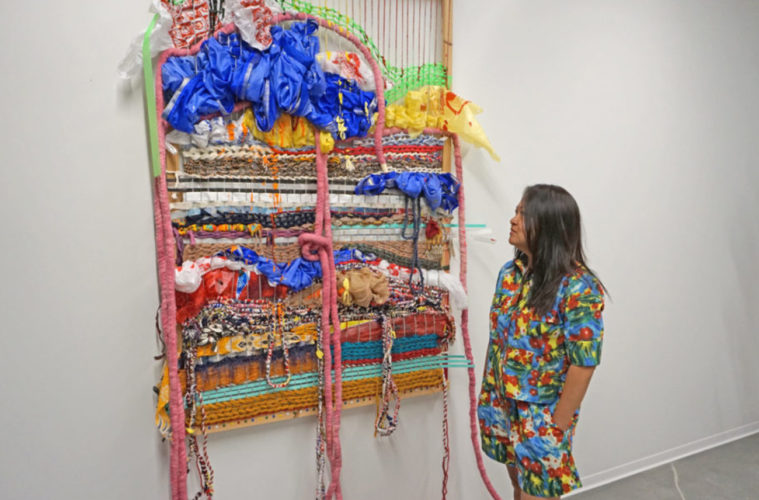 Diane Williams uses found, discarded, salvaged materials in her sculptural assemblage works. While this yields tactile, assertively handmade, eccentric and enlivened objects, this approach’s more profound dimension is as both a conceptual and narrative strategy. That’s because her selection of those materials themselves are specifically chosen to describe and evoke the stories she is telling about forgotten histories — both personal to her and across a postcolonial diasporic globe. From the immigrant experience in new nations to buried invasions and trespasses against populations in their own lands, Williams is interested in weaving together — quite literally — the evidence. The latest evolution of her unique visual language is on view from July 15 at the USC MFA program’s exhibition space in downtown.
Diane Williams uses found, discarded, salvaged materials in her sculptural assemblage works. While this yields tactile, assertively handmade, eccentric and enlivened objects, this approach’s more profound dimension is as both a conceptual and narrative strategy. That’s because her selection of those materials themselves are specifically chosen to describe and evoke the stories she is telling about forgotten histories — both personal to her and across a postcolonial diasporic globe. From the immigrant experience in new nations to buried invasions and trespasses against populations in their own lands, Williams is interested in weaving together — quite literally — the evidence. The latest evolution of her unique visual language is on view from July 15 at the USC MFA program’s exhibition space in downtown.
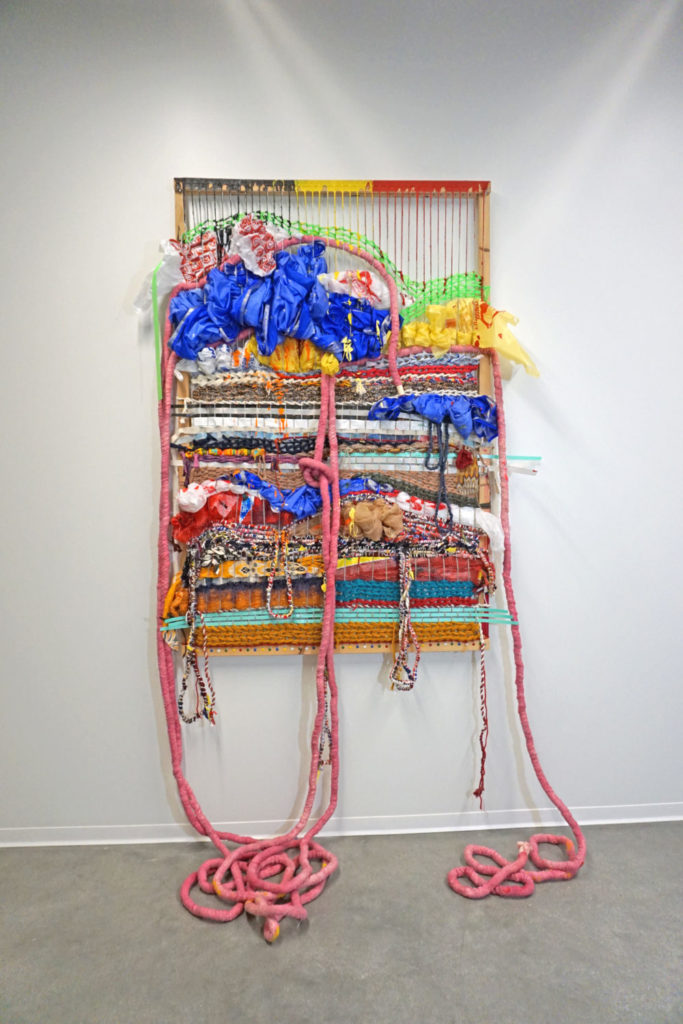
Diane Williams, The Umbilical Cord, 2021, 43 x 120 inches. Fabric, yarn, plastic netting, plastic bags, acrylic paint, dyed cotton welt piping cord (Courtesy of the artist)
L.A. WEEKLY: When did you first know you were an artist?
DIANE WILLIAMS: I knew I was an artist when I became interested in the socio-political aspects of my lived experience as a young child in the Philippines. For me, being an artist is asking questions about how systems work and why people are living under their material conditions. My inquisitive nature is why I became an artist. Unlike writers, philosophers, musicians and other practices, visual artists examine theories in a visual language and dissect their ideas in a multiple array of strategies.
What is your short answer to people who ask what your work is about?
I’m an interdisciplinary Filipinx artist, researcher and organizer living and working in Los Angeles, who examines colonial legacies and the afterlives of empire. I contextualize this idea by creating works that embody shared and non-linear collective stories of the underrepresented Other, illegible under the political economy of life. I weave physical cultural detritus as metaphors for how the marginalized are often viewed as “detritus of society” while monumentalizing these embodied objects. My materials are pulled from diverse sources: friends, family (in the U.S., Philippines and abroad) and my immigrant communities in Los Angeles.
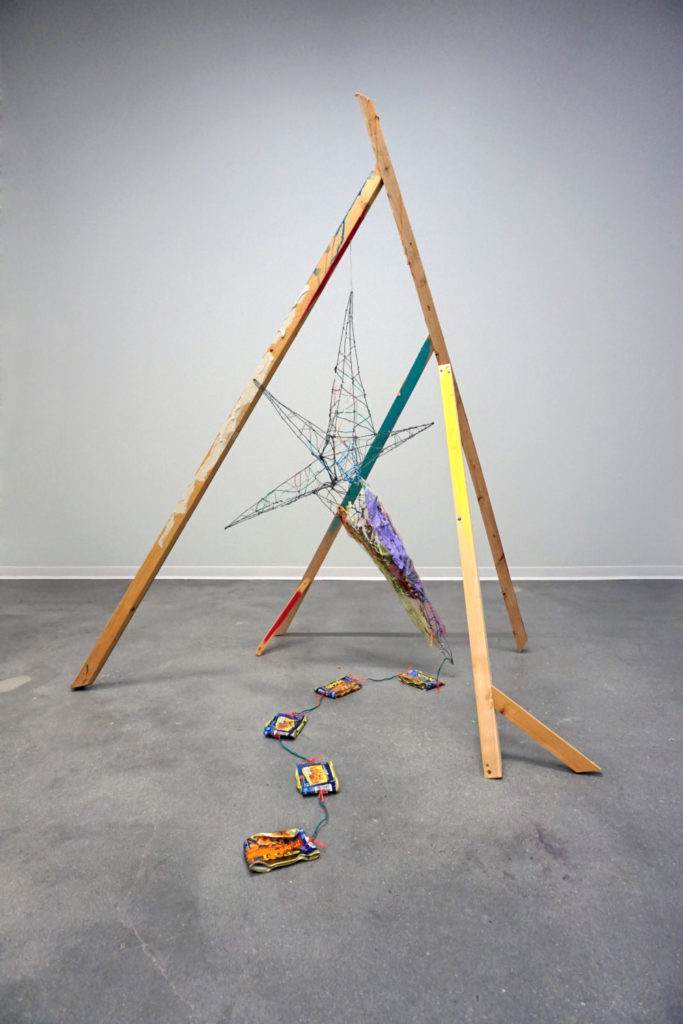
Diane Williams, The Spam Story, 2020, 72” x 60 x 50 inches, Wood, acrylic, plastic bag, wire, Spam cans (Courtesy of the artist)
Did you go to art school? Why/Why not?
Yes, I recently graduated from USC Roski’s MFA program. Although a graduate degree isn’t a prerequisite to being an artist, the program helped develop my work and the concepts behind why I make the work that I create.
When is/was your current/most recent/next show?
My next solo show, The Precarious Life of the Parol, is July 15-25 at USC’s MFA graduate building (1262 Palmetto St.) in DTLA’s Arts District. There’s an opening reception on Friday, July 16, 5-8pm. This work is based on my research of the Parol in the Filipinx culture and draws upon memory and ceremony to articulate the long colonial history of the Philippines, and those in the Filipinx diaspora. The Parol is a star-shaped Christmas lantern believed to have originated from the Spanish colonial era, but its true roots are unclear.
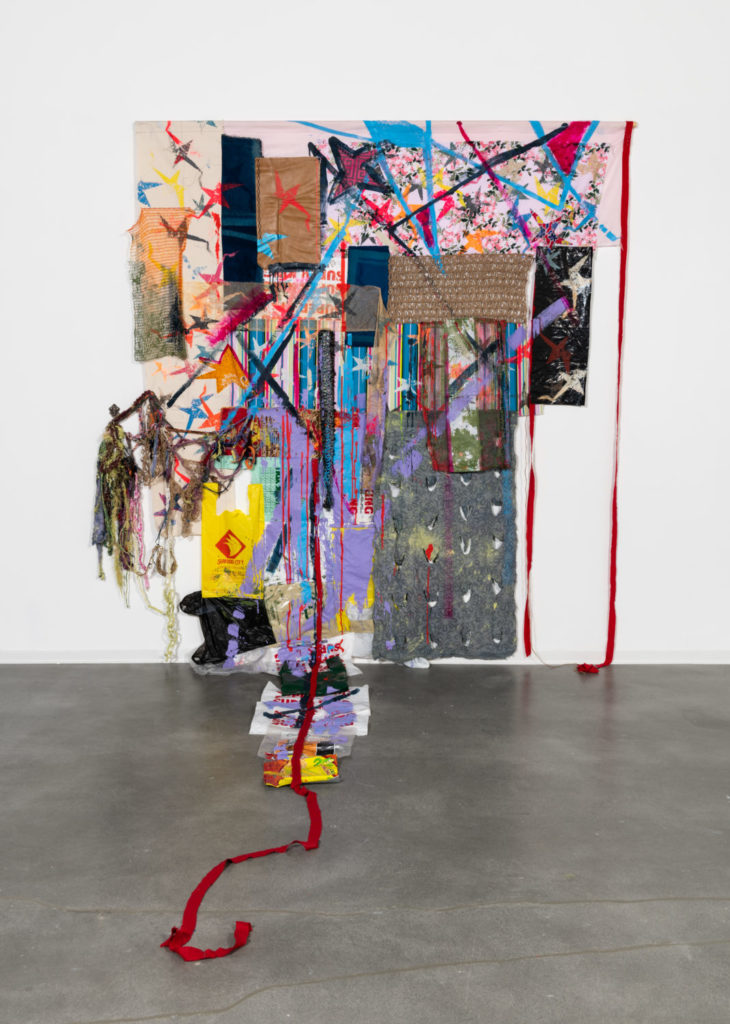
Diane Williams, Curtain of Illegibility, 2020, 84 x 204 inches, Fabric, yarn, plastic netting, plastic bags, ribbon, jute, acrylic, silkscreen ink on wooden dowel (Courtesy of the artist)
After tracing the history of the Parol, the endless search for its lineage became apparent as I could not find archives beyond travel websites. I was left with an amalgamation and fragments of historical accounts. I use this object to examine lineage and “authenticity” in a non-essentialized and non-romanticized way as a process of recontextualizing what it means to be illegible under the political economy of life. The work questions the discrepancies in the archives as well as contending with the impossibility of retrieving stories of the lives of people who have been forgotten and omitted in history.
Website and social media handles, please!
IG: @dianewilliamsartist
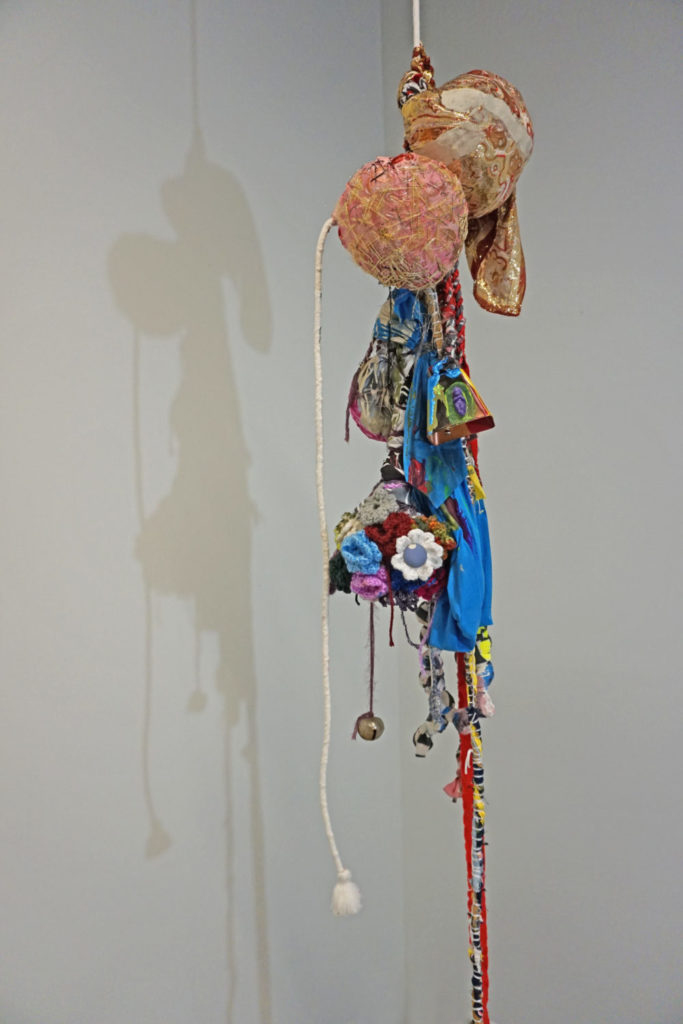
Diane Williams, The Santo Niño Story, 2021, 18 x 18 x 160 inches, Fabric, yarn, cowbell, resin, rope, acrylic, thread, acrylic paint (Courtesy of the artist)
Advertising disclosure: We may receive compensation for some of the links in our stories. Thank you for supporting LA Weekly and our advertisers.

